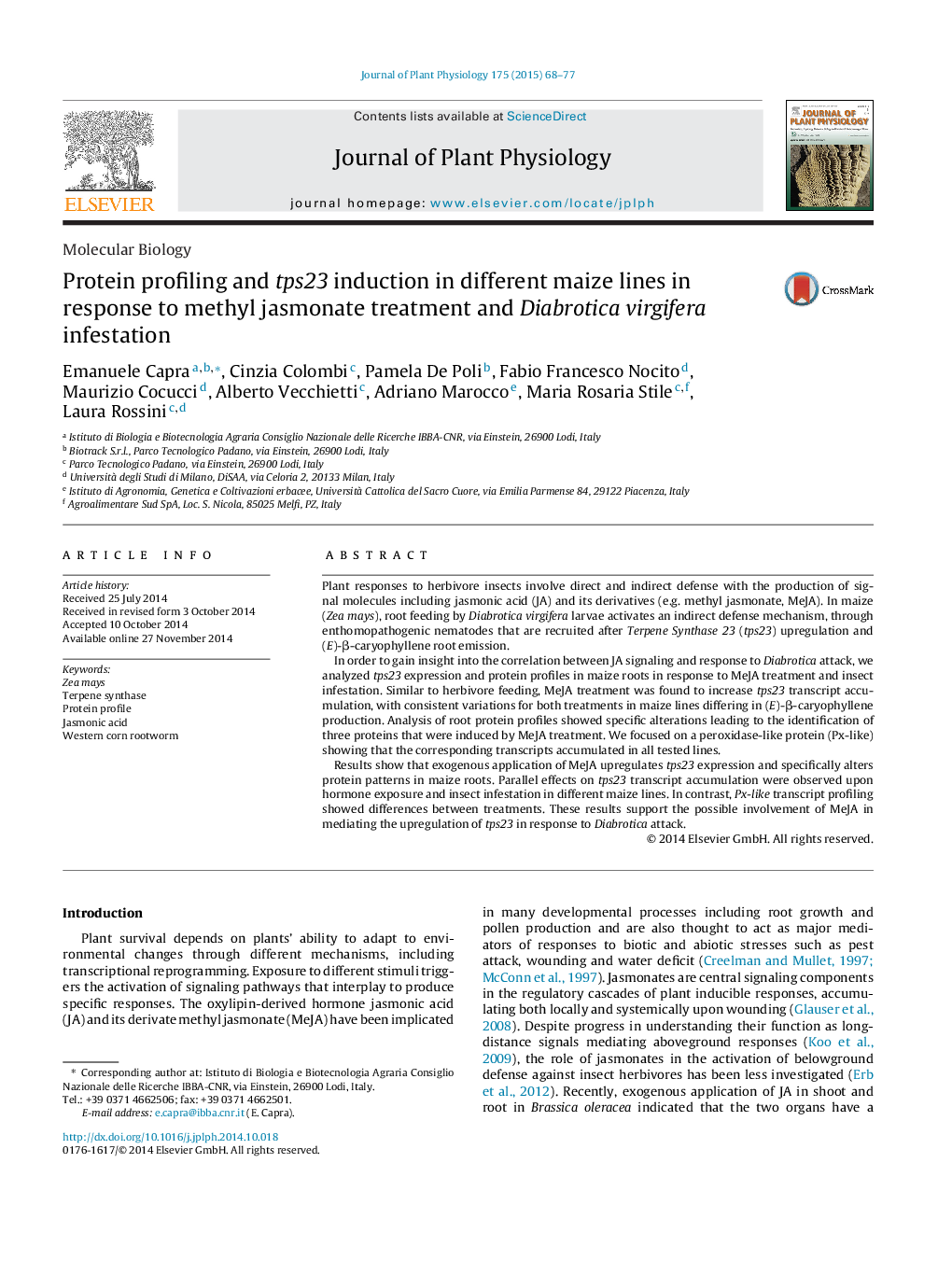| Article ID | Journal | Published Year | Pages | File Type |
|---|---|---|---|---|
| 2055741 | Journal of Plant Physiology | 2015 | 10 Pages |
Plant responses to herbivore insects involve direct and indirect defense with the production of signal molecules including jasmonic acid (JA) and its derivatives (e.g. methyl jasmonate, MeJA). In maize (Zea mays), root feeding by Diabrotica virgifera larvae activates an indirect defense mechanism, through enthomopathogenic nematodes that are recruited after Terpene Synthase 23 (tps23) upregulation and (E)-β-caryophyllene root emission.In order to gain insight into the correlation between JA signaling and response to Diabrotica attack, we analyzed tps23 expression and protein profiles in maize roots in response to MeJA treatment and insect infestation. Similar to herbivore feeding, MeJA treatment was found to increase tps23 transcript accumulation, with consistent variations for both treatments in maize lines differing in (E)-β-caryophyllene production. Analysis of root protein profiles showed specific alterations leading to the identification of three proteins that were induced by MeJA treatment. We focused on a peroxidase-like protein (Px-like) showing that the corresponding transcripts accumulated in all tested lines.Results show that exogenous application of MeJA upregulates tps23 expression and specifically alters protein patterns in maize roots. Parallel effects on tps23 transcript accumulation were observed upon hormone exposure and insect infestation in different maize lines. In contrast, Px-like transcript profiling showed differences between treatments. These results support the possible involvement of MeJA in mediating the upregulation of tps23 in response to Diabrotica attack.
